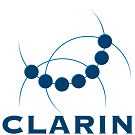Spoken language recognition: Difference between revisions
Appearance
No edit summary |
Marked this version for translation |
||
| Line 1: | Line 1: | ||
<translate> | <translate> | ||
<!--T:1--> | |||
Spoken language recognition is the task of recognizing in which language speech is spoken. | Spoken language recognition is the task of recognizing in which language speech is spoken. | ||
<!--T:2--> | |||
== VoxLingua107 ECAPA-TDNN Spoken Language Identification Model == | == VoxLingua107 ECAPA-TDNN Spoken Language Identification Model == | ||
This is a spoken language recognition model trained on the VoxLingua107 dataset using SpeechBrain, and includes Dutch. It can be used in a python context. | This is a spoken language recognition model trained on the VoxLingua107 dataset using SpeechBrain, and includes Dutch. It can be used in a python context. | ||
<!--T:3--> | |||
* [https://huggingface.co/speechbrain/lang-id-voxlingua107-ecapa Website] | * [https://huggingface.co/speechbrain/lang-id-voxlingua107-ecapa Website] | ||
</translate> | </translate> | ||
Revision as of 12:38, 3 April 2024
Spoken language recognition is the task of recognizing in which language speech is spoken.
VoxLingua107 ECAPA-TDNN Spoken Language Identification Model
This is a spoken language recognition model trained on the VoxLingua107 dataset using SpeechBrain, and includes Dutch. It can be used in a python context.
